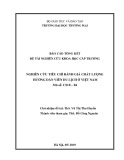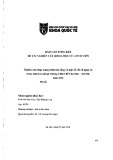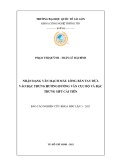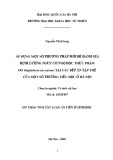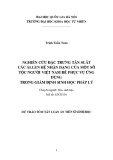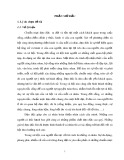
BioMed Central
Page 1 of 7
(page number not for citation purposes)
Comparative Hepatology
Open Access
Research
Accuracy of hyaluronic acid level for predicting liver fibrosis stages
in patients with hepatitis C virus
Philippe Halfon*1, Marc Bourlière2, Guillaume Pénaranda1,
Romaric Deydier1, Christophe Renou3, Danielle Botta-Fridlund4,
Albert Tran5, Isabelle Portal4, Isabelle Allemand4, Alessandra Rosenthal-
Allieri5 and Denis Ouzan6
Address: 1Department of virology, Alphabio Laboratory, Marseille, France, 2Department of Hepato-Gastroenterology, Saint-Joseh Hospital,
Marseille, France, 3Department of Hepato-Gastroenterology, Hyères Hospital, Hyères, France, 4Department of Hepato-Gastroenterology, La
Conception Hospital, Marseille, France, 5Department of Hepato-Gastroenterology, Archet Hospital, Nice, France and 6Department of Hepato-
Gastroenterology, Arnault Tzanck Institute, Saint Laurent du Var, France
Email: Philippe Halfon* - philippe.halfon@alphabio.fr; Marc Bourlière - mbourliere@hopital-saint-joseph.fr;
Guillaume Pénaranda - g.penaranda@alphabio.fr; Romaric Deydier - r.deydier@alphabio.fr; Christophe Renou - crenou@ch-hyeres.fr;
Danielle Botta-Fridlund - dbotta@mail.ap-hm.fr; Albert Tran - tran@unice.fr; Isabelle Portal - g.penaranda@alphabio.fr;
Isabelle Allemand - g.penaranda@alphabio.fr; Alessandra Rosenthal-Allieri - Alessandra.Rosenthal-Allieri@unice.fr;
Denis Ouzan - denis.ouzan@wanadoo.fr
* Corresponding author
Abstract
Background: In patients with chronic hepatitis C virus, liver biopsy is the gold standard for
assessing liver disease stage; nevertheless, it is prone to complications, some of them serious. Non-
invasive methods have been proposed as surrogate markers for liver fibrosis. It was shown that
serum hyaluronic acid (HA) level increases with the development for liver fibrosis. The aim of this
study was to evaluate the diagnostic value of HA as well as to determine the HA level cut-off for
predicting the presence or absence of fibrosis, severe fibrosis, and cirrhosis.
Results: 405 patients with chronic hepatitis C were prospectively included with biomarker
measurement and liver biopsy done the same day: 151 in the training set (only biopsy lengths of 25
mm or more) and 254 in the validation set. For the discrimination of significant fibrosis, severe
fibrosis, and cirrhosis in the training set, the areas under curve (AUCs) were 0.75 ± 0.03, 0.82 ±
0.02, and 0.89 ± 0.03, respectively. Absence of significant fibrosis, severe fibrosis, and cirrhosis can
be predicted by HA levels of 16, 25, and 50 µg/l, respectively (with negative predictive values of
82%, 89%, and 100%, in the same order). Presence of significant fibrosis, severe fibrosis, and
cirrhosis can be predicted by HA levels of 121, 160, and 237 µg/l, respectively (with positive
predictive values of 94%, 100%, and 57%, in the same order).
Conclusion: In the validation set, HA was accurate in predicting significant fibrosis, severe fibrosis,
and cirrhosis with AUCs of 0.73, 0.77, and 0.97, respectively. Moreover, accurate HA level cut-offs
were defined for predicting significant fibrosis, severe fibrosis, and cirrhosis. Thus, the study
supports that HA level may be clinically useful as a non-invasive marker for liver fibrosis and/or
cirrhosis.
Published: 11 July 2005
Comparative Hepatology 2005, 4:6 doi:10.1186/1476-5926-4-6
Received: 07 April 2005
Accepted: 11 July 2005
This article is available from: http://www.comparative-hepatology.com/content/4/1/6
© 2005 Halfon et al; licensee BioMed Central Ltd.
This is an Open Access article distributed under the terms of the Creative Commons Attribution License (http://creativecommons.org/licenses/by/2.0),
which permits unrestricted use, distribution, and reproduction in any medium, provided the original work is properly cited.








